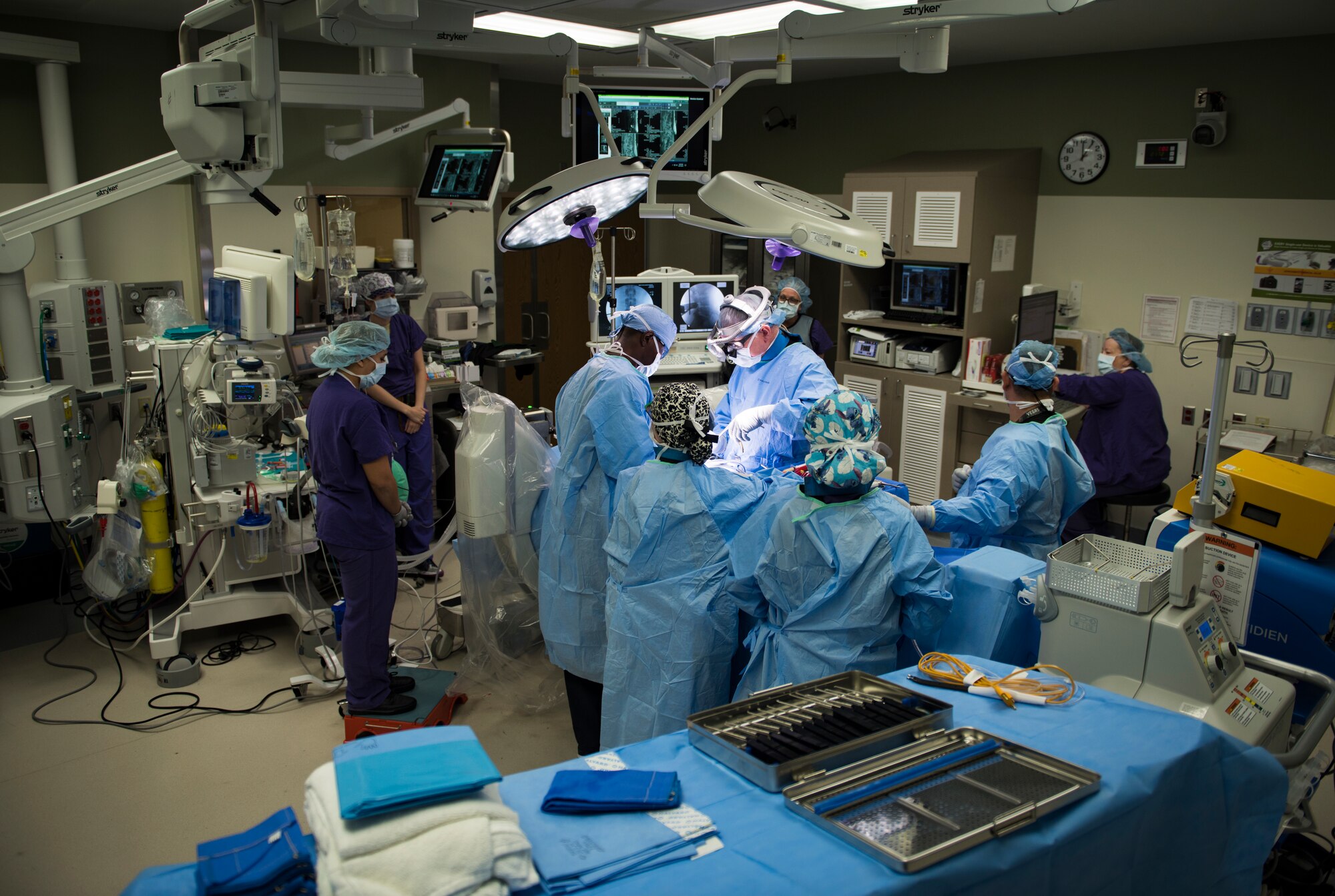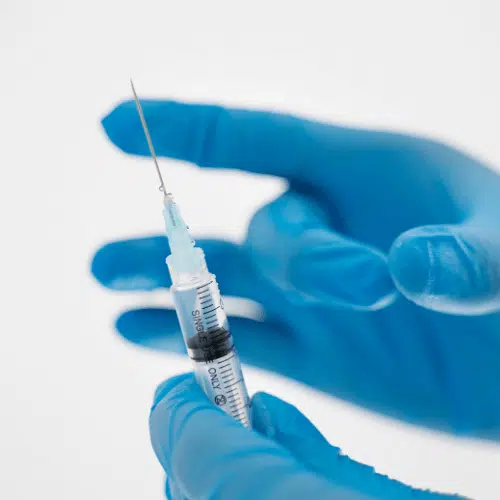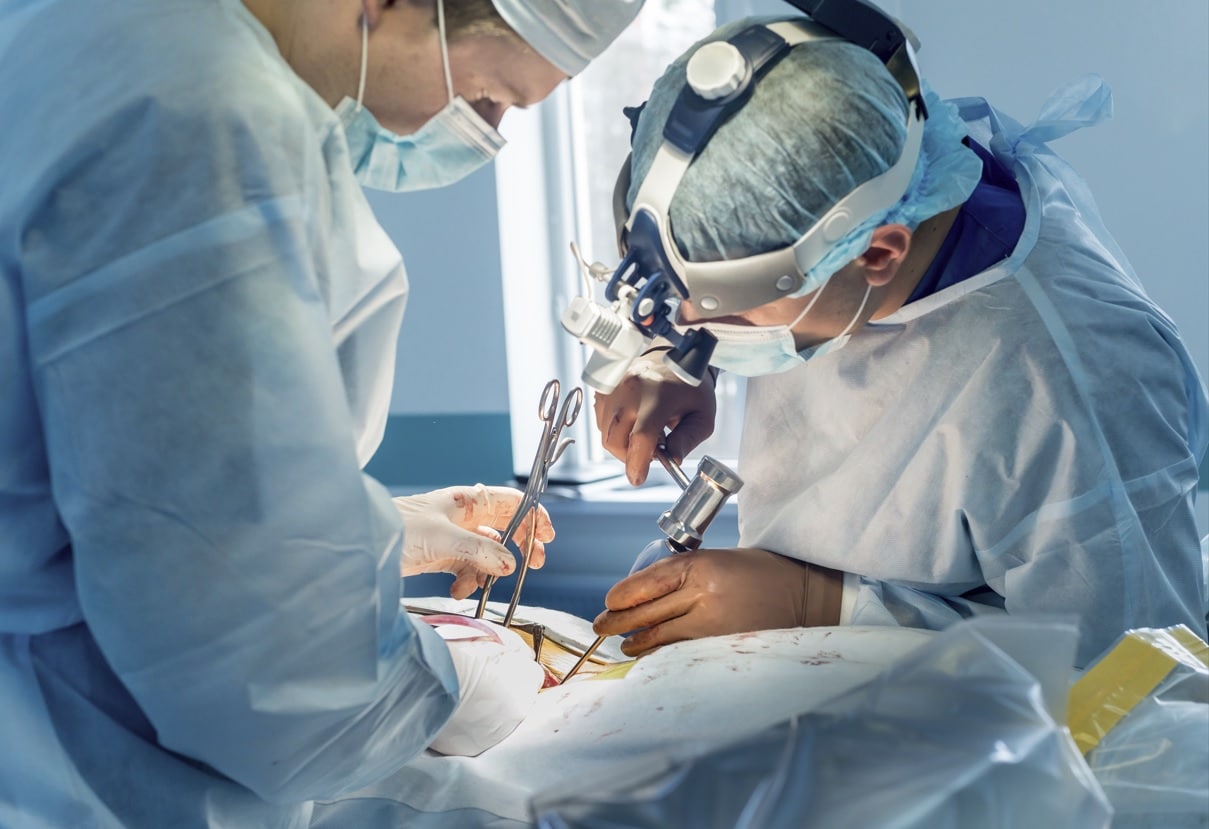Tips for Recuperation After Surgical Procedure with the Best Spine Surgeons in St Louis MO
Tips for Recuperation After Surgical Procedure with the Best Spine Surgeons in St Louis MO
Blog Article
An Overview of Spine Problems That Often Cause Surgical Therapies
Spine problems such as herniated discs, spinal stenosis, and degenerative disc condition often necessitate surgical interventions when conventional treatments fall short to reduce consistent symptoms. Recognizing the subtleties of each condition and the matching surgical alternatives, such as discectomy or spine combination, is important for efficient management.
Herniated Discs
Although numerous people with herniated discs might discover alleviation with conservative treatments, surgery comes to be a necessary factor to consider when symptoms worsen or linger - best spine surgeons in st louis mo. A herniated disc occurs when the soft internal gel of a spinal disc protrudes with its outer layer, possibly leading and compressing close-by nerves to discomfort, tingling, or weak point in the extremities
Traditional administration generally consists of physical treatment, pain medicines, and corticosteroid injections, which intend to lower inflammation and boost function. However, in situations where these approaches fail to relieve incapacitating signs and symptoms, surgical choices might be explored.
One of the most typical surgery for herniated discs is a discectomy, which entails the removal of the herniated portion of the disc to eliminate pressure on the impacted nerve root. In a lot more extreme instances, spinal blend may be required to stabilize the influenced vertebrae.
People are encouraged to discuss the potential risks and benefits of surgical treatment with their doctor to make an informed decision. Ultimately, the objective of any surgical treatment is to bring back function, ease discomfort, and boost general high quality of life for individuals struggling with herniated discs.
Spinal Stenosis
Back constriction takes place when the areas within the spinal column slim, bring about enhanced pressure on the spinal cable and nerves. This condition can establish in various regions of the spine, including the back and cervical areas, commonly as a result of age-related adjustments, such as degenerative disc condition, arthritis, or thickening of tendons.
Patients with back stenosis may offer with signs that consist of pain, pins and needles, prickling, or weak point, mostly in the legs or arms. These symptoms can be aggravated by tasks that involve standing or walking, often leading people to seek alleviation via conventional treatments like physical treatment, medications, or epidural steroid injections.
Nevertheless, when these non-surgical interventions stop working to provide ample relief, surgical choices might be thought about. Common operations for spine constriction include laminectomy, which entails the removal of part of the vertebra to alleviate stress, and spinal combination, which supports the affected location. The decision to go after surgery is generally based upon the seriousness of signs, the degree of functional impairment, and the general wellness of the client. Motivate diagnosis and administration are critical to avoid more neurological concession and enhance high quality of life.
Spondylolisthesis
Spondylolisthesis takes place when one vertebra slides onward over another, causing imbalance of the back. This condition can arise from various factors, consisting of hereditary issues, injury, or degenerative adjustments in the spine. It is most typically observed in the lumbar region, particularly at the L4-L5 and L5-S1 levels.

Treatment choices differ based upon the intensity of the slippage and the symptoms offered. Conservative steps, including physical treatment, discomfort monitoring, and activity modification, are usually the very first line of defense. When non-surgical approaches fall short to relieve signs and symptoms or when considerable nerve compression is existing, surgical intervention may be called for. Surgical choices can include spine blend or decompression procedures, focused on recovering alignment and minimizing neurological signs and symptoms. Early medical diagnosis and proper management are critical for optimum results in people with spondylolisthesis.
Degenerative Disc Illness
/0x0:512x512/prod01/channel_2/media/mccms/content-assets/academics/residencies-and-fellowships/spine-surgery-fellowship-minnesota/overview/final-512X512-OR710-2020-10-05_0007.jpg)
Individuals with DDD often experience discomfort that might emit to the arms or legs, relying on the affected region of the spinal column. The condition can be identified via a combination of scientific evaluation, imaging research studies, and individual history. Therapy alternatives usually start with conservative actions, consisting of physical treatment, discomfort monitoring, and lifestyle modifications. Nonetheless, when these approaches see post fail to provide ample relief, medical interventions might be thought about.
Surgical alternatives for DDD may consist of back fusion or artificial disc substitute, focused on supporting the impacted sector and alleviating pain (best spine surgeons in st louis mo). Ultimately, the selection of therapy is embellished, taking right into account the severity of the problem, client health, and way of living elements
Spinal Tumors

Spinal lumps can occur from various aspects, including hereditary tendency, environmental impacts, and pre-existing clinical problems. Patients might offer with an array of symptoms, including local discomfort, neurological shortages, weak point, or changes in bowel and bladder feature, depending on the tumor's size and area.
Surgical treatment might be necessitated to reduce signs, get a biopsy, or get rid of the growth entirely. The goal of surgical treatment is frequently to decompress neural components and maintain the spine. Early discovery and navigate here treatment are vital for maximizing results in people with spine tumors.
Conclusion
In summary, spinal column conditions such as herniated discs, spinal stenosis, spondylolisthesis, degenerative disc disease, and back growths frequently necessitate surgical treatment as a result of their possible to cause substantial pain and functional disability. While conventional treatments might provide momentary alleviation, surgical choices become crucial when signs get worse or continue. Timely diagnosis and intervention play a critical duty in bring back function and boosting the lifestyle for damaged people, highlighting the value of comprehensive spinal care.

Report this page